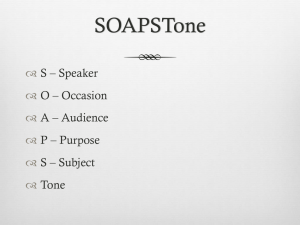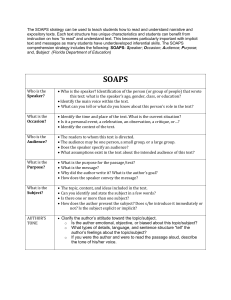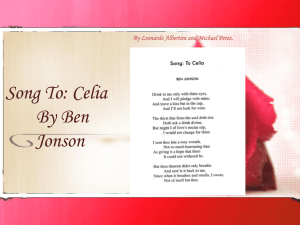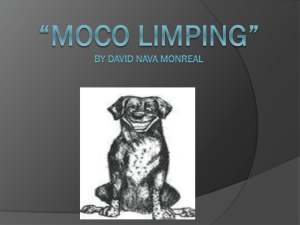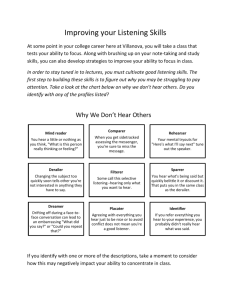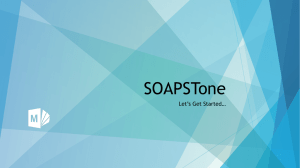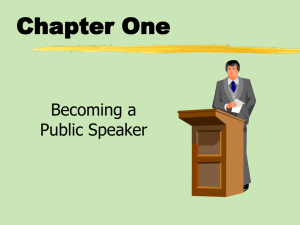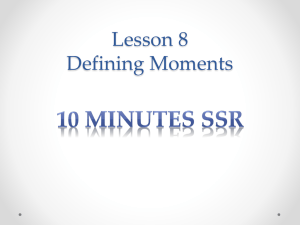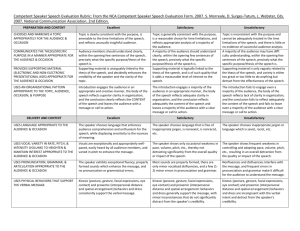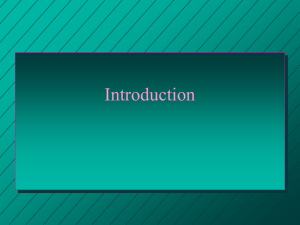Annotating A Non-Fiction Text
advertisement
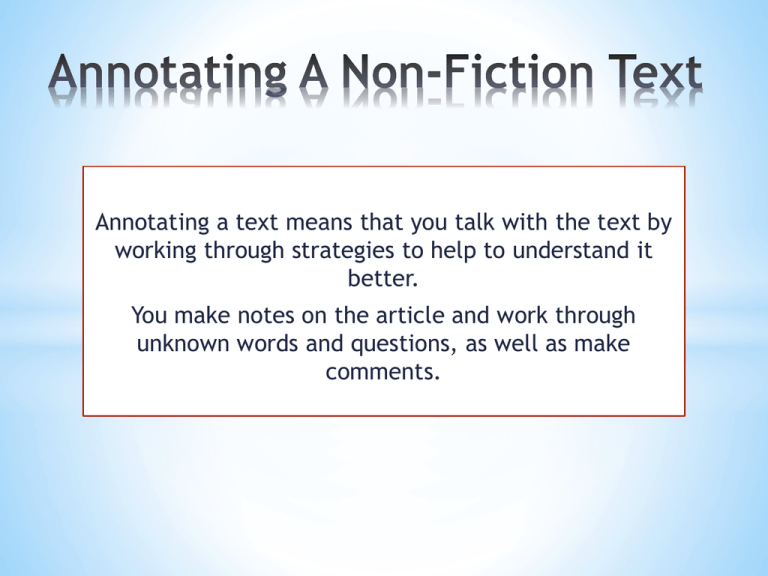
Annotating a text means that you talk with the text by working through strategies to help to understand it better. You make notes on the article and work through unknown words and questions, as well as make comments. * * Circle unfamiliar words (then define them) * Acknowledge the confusion * Talk with text * Comments * Predictions * Observations * Connections * Reactions * Capture the main idea * Highlight important details Annotating Video: http://www.youtube.com/watch?v=IzrWOj0gWHU&list=FLDSLLdqYLLVYNzm1ayHiSA&feature=mh_lolz * * Speaker: Who is the voice in the text? Include any background information. What points is the speaker making? Is there any bias? * Occasion: What is the occasion for writing this piece? Include time & place. What promoted the author to write this piece? Include any events, ideas, and/or contexts. * Audience: Who was this document created for? Is it aimed for one person, a group of people, a particular race, social class, political party, etc? This can come from any inferences in the text, the diction, the connation of chosen words, and the traits of the Speaker. * * Purpose: What is the reason behind the text? What does the speaker want the audience to think or do as a result of reading the piece? What reaction is the author trying to get from the audience? Examine any themes being presented. * Subject: What is the general topic, content, and ideas contained in the text? Go beyond the immediate occasion to discover the larger context or issue that eventually led to the triggering Occasion. * Tone: What is the attitude of the speaker/ author? How does the author feel? What is the attitude the writer takes towards the subject or character? Analyze diction, syntax, connation, and imagery to determine the attitude being presented. * * Political Cartoon * Speaker: Anti-isolationist political cartoonist, Dr. Seuss. * Occasion: the attacks on England by Nazi Germany * Audience: 1) other anti-isolationists 2) isolationists * Purpose: 1) support those who feel America should enter war 2)shame isolationists for their foolish views * Subject: World War II * Tone: mocking, humorous, satirical * Purpose: What is the author’s argument/claim? What is the focus? Is the author writing to entertain you? Inform you of about something? Persuade you to action? Convince you to feel to think or feel a certain way? Does he/she wish to contrast ideas? Be specific, and point to concrete examples (use evidence/quotes from the text). Audience: Explain the author’s projected audience. Are they friendly or hostile? Are they associated with a particular interest group? Of a particular age? Gender? Social class? Support your choices with examples and/or explanations. Speaker: Describe who is speaking in the text. For informational texts, the speaker is usually the author. For nonfiction, the speaker is a character. Who is the speaker here? What do you know about him/her? Use textual evidence/quotes to support your claim. Tone: What words does the author use to show the speaker’s attitude? What tone does the author take towards the subject? Toward the audience? How does the author deliver the message? Organization: What organization method does the author use, and how does this organization enhance the development of the author’s claim? Rhetoric: How does the author construct his/her sentences? How can you classify the author’s word choice? How do these elements affect the author’s claim? Imagery: What are the primary images in the text? What about figurative language (metaphors, similes, repetition, allusion, alliteration, personification, vivid descriptions)? What ideas do they tend to represent? How do these images enhance the author’s purpose and claim? * FATT sentence (Focus, Author, Title, text type) In the ____________________, “__________________________” by (text type) (title) _____________________________, he/she ______________________ (author) focus) ____________________________________________________________. **Strong verbs: expresses, discusses, states, disputes, persuades, suggests, advocates, challenges, focuses, supports, presents, emphasizes, provides, argues, claims, attacks, reflects, comments, describes, distinguishes, reveals, implies, refers, displays

